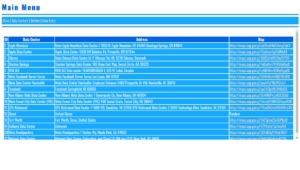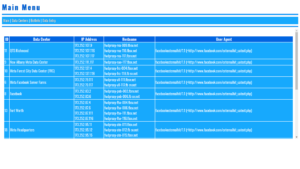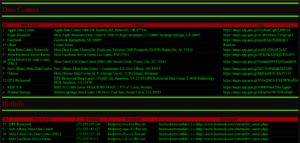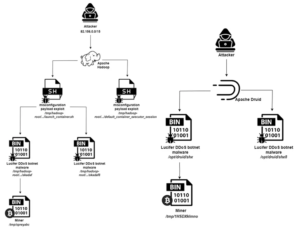PixieBot Free Image Downloads
PixieBot Free Image Downloads
Description: PixieBot Free Image Downloads Via PixieBot
URL: http://pixie.seaverns.com/

Pixie Free Image Downloads

Description: PixieBot Free Image Downloads Via PixieBot
URL: http://pixie.seaverns.com/

Pixie Free Image Downloads

In the digital battlefield, securing data is paramount. OpenSSL encryption and decryption are crucial weapons in our arsenal, and understanding the strategic use of session data (cookies) versus MySQL storage can make all the difference. To explore these strategies, we’ll turn to the ancient wisdom of Sun Tzu’s “The Art of War,” examining the strengths and weaknesses of these approaches and how they align with Sun Tzu’s principles.
OpenSSL is a robust toolkit that provides cryptographic functions, including encryption and decryption. Its strength lies in its ability to secure data using algorithms like AES-256, combined with mechanisms such as initialization vectors (IVs) and hash-based message authentication codes (HMACs). But where should this encryption and decryption take place? In the realms of session data or database storage?
1. The Strategy of Speed and Agility
2. The Risks of the Quick Strike
Sun Tzu’s Wisdom: “Speed is the essence of war.” The agility of session storage aligns with this principle, offering rapid access but at the cost of security and persistence.
1. The Strategy of Long-Term Security
2. The Risks of Fortification
Sun Tzu’s Wisdom: “The skillful fighter puts himself into a position which makes defeat impossible.” Using MySQL for secure storage aligns with this principle, ensuring long-term security and control, albeit with a potential trade-off in agility and performance.
1. Security and Persistence
2. Flexibility vs. Fortification
Sun Tzu’s Wisdom: “Know your enemy and know yourself and you can fight a hundred battles without disaster.” Understanding the strengths and limitations of each approach allows you to choose the best strategy for your specific needs.
Examples:
In the realm of data encryption and decryption, the choice between session storage and MySQL storage reflects a balance between speed, security, and persistence. Like Sun Tzu’s strategic principles, your approach should be guided by the context and objectives of your mission. Whether you opt for the agility of session data or the fortification of MySQL, aligning your strategy with your needs ensures a victorious outcome in the ever-evolving landscape of digital security.
By applying these ancient strategies to modern encryption practices, you can better navigate the complexities of data security, ensuring that your digital battlefield is well-defended and strategically sound.

A simple and easy to use php Visitor Logger that saves log files in an easy to work with file and directory structure. You can customize every aspect of the logger and it adds the new Google Maps link to the Visitor Geo-Location Information. I also activated the Referring URL for this Public Version as well.
This is a Public Demo and Not Available For Download.
If you’re interested in a copy, find me.

Sleek and easy to use MySQL Database Editor.
Enter Server Configuration Manually Or Automatically From File.
By: K0NxT3D
Version: 2.0.1
URL: http://www.seaverns.com/senya/
File: Senya_2.0.zip
Senya 2.0 Files:
index.php – Main Page
display_table.php – Display MySQL Tables
update.php – Update MySQL Tables
style.css – Default Style
saved_hosts.txt – Example Autoload Configuration File

Сеня 1.0 – K0NxT3D 2024
Back End WordPress Utility
Features:
A simple and easy to use PHP/HTML Based MySQL Back End Connection Utility with Editing Capabilities and Email Harvesting across Multiple Domains.
I collect a lot of data and data mining is just one of those things that I enjoy.
I build Web Crawlers and Web Scrapers often, but I really love tracking other
bots, some of which I’ve “known” for decades now.
With the ever expanding Facebook Empire, I’ve been catching a lot of the
hits from FacebookExternalHit,
[ facebookexternalhit/1.1 (+http://www.facebook.com/externalhit_uatext.php) ]
and while Facebook it’self is being overrun by nefarious bots and hacked accounts,
their problem is my solution.
The majority of the hits from FacebookExternalHit have preceded an attack, which tells me several things.
1: Facebook For Developers has given nefarious actors an edge on the Facebook user and I won’t go into detail on that, but I can make better informed security decisions based on what can be done from that side of the platform.
2: I can test my security software on both Facebook and my websites by simply posting a link to Facebook and this is really handy in my line of work. I get to see which Data Center the bot is coming from (GeoLocation), how many bots that particular Data Center has (Interesting Data There) and how fast the reaction time is, which helps determine the software being used and in which manner it’s being used.
3: Most Importantly, it gives me reasons to build new software.
So, I built this database for such purpose as to collect more data on the situation and there’s some interesting patterns developing. While it’s not exactly something I feel the urge to release, it’s worth sharing.
FBDC uses Php and MySQL, a pretty simple database and small file sizes (I like small files).
The User Input Form Works.. Ikr, a form that works??
It has a few things left to work out on the user input; I’m a big fan of getting my hands dirty,
so Updating the Data Center / BotInfo is being done via phpmyadmin until I build a better form.
Here’s a few screenshots:

FBDC – Facebook Data Centers and FacebookExternalHit Bot Collected Data – Main Menu

FBDC – Facebook Data Centers and FacebookExternalHit Bot Collected Data – Data Center List

FBDC – Facebook Data Centers and FacebookExternalHit Bot Collected Data – BotInfo List

FBDC – Facebook Data Centers and FacebookExternalHit Bot Collected Data – User Input Form

FBDC – Facebook Data Centers and FacebookExternalHit Bot Collected Data – Because There HAS to be a Hacker Theme too.
Maybe Microsoft should use Linux?
Original Article: TechCrunch
Wouldn’t you want to know what tech giants know about you?
That’s exactly what Russian government hackers want, too.
On Friday, Microsoft disclosed that the hacking group it calls Midnight Blizzard, also known as APT29 or Cozy Bear — and widely believed to be sponsored by the Russian government — hacked some corporate email accounts, including those of the company’s “senior leadership team and employees in our cybersecurity, legal, and other functions.”
Curiously, the hackers didn’t go after customer data or the traditional corporate information they may have normally gone after. They wanted to know more about themselves, or more specifically, they wanted to know what Microsoft knows about them, according to the company.
“The investigation indicates they were initially targeting email accounts for information related to Midnight Blizzard itself,” the company wrote in a blog post and SEC disclosure.
According to Microsoft, the hackers used a “password spray attack” — essentially brute forcing — against a legacy account, then used that account’s permissions “to access a very small percentage of Microsoft corporate email accounts.”
Microsoft did not disclose how many email accounts were breached, nor exactly what information the hackers accessed or stole.
Company spokespeople did not immediately respond to a request for comment.
Microsoft took advantage of news of this hack to talk about how they are going to move forward to make itself more secure.

“For Microsoft, this incident has highlighted the urgent need to move even faster. We will act immediately to apply our current security standards to Microsoft-owned legacy systems and internal business processes, even when these changes might cause disruption to existing business processes,” the company wrote. “This will likely cause some level of disruption while we adapt to this new reality, but this is a necessary step, and only the first of several we will be taking to embrace this philosophy.”
APT29, or Cozy Bear, is widely believed to be a Russian hacking group working responsible for a series of high-profile attacks, such as those against SolarWinds in 2019, the Democratic National Committee in 2015, and many more.
The Clown Show Must Go On!
SSH-Snake, a self-modifying worm that leverages SSH credentials.
Original Article : The Hacker News
A recently open-sourced network mapping tool called SSH-Snake has been repurposed by threat actors to conduct malicious activities.
“SSH-Snake is a self-modifying worm that leverages SSH credentials discovered on a compromised system to start spreading itself throughout the network,” Sysdig researcher Miguel Hernández said.
“The worm automatically searches through known credential locations and shell history files to determine its next move.”
SSH-Snake was first released on GitHub in early January 2024, and is described by its developer as a “powerful tool” to carry out automatic network traversal using SSH private keys discovered on systems.
In doing so, it creates a comprehensive map of a network and its dependencies, helping determine the extent to which a network can be compromised using SSH and SSH private keys starting from a particular host. It also supports resolution of domains which have multiple IPv4 addresses.
“It’s completely self-replicating and self-propagating – and completely fileless,” according to the project’s description. “In many ways, SSH-Snake is actually a worm: It replicates itself and spreads itself from one system to another as far as it can.”

BotNet CNC Control Hacker Infiltrates & Exploits Vulnerabilities Vie SSH TCP Both Hardware Software Exploited
Sysdig said the shell script not only facilitates lateral movement, but also provides additional stealth and flexibility than other typical SSH worms.
The cloud security company said it observed threat actors deploying SSH-Snake in real-world attacks to harvest credentials, the IP addresses of the targets, and the bash command history following the discovery of a command-and-control (C2) server hosting the data.
These attacks involve active exploitation of known security vulnerabilities in Apache ActiveMQ and Atlassian Confluence instances in order to gain initial access and deploy SSH-Snake.
“The usage of SSH keys is a recommended practice that SSH-Snake tries to take advantage of in order to spread,” Hernández said. “It is smarter and more reliable which will allow threat actors to reach farther into a network once they gain a foothold.”
When reached for comment, Joshua Rogers, the developer of SSH-Snake, told The Hacker News that the tool offers legitimate system owners a way to identify weaknesses in their infrastructure before attackers do, urging companies to use SSH-Snake to “discover the attack paths that exist – and fix them.”
“It seems to be commonly believed that cyber terrorism ‘just happens’ all of a sudden to systems, which solely requires a reactive approach to security,” Rogers said. “Instead, in my experience, systems should be designed and maintained with comprehensive security measures.”
“If a cyber terrorist is able to run SSH-Snake on your infrastructure and access thousands of servers, focus should be put on the people that are in charge of the infrastructure, with a goal of revitalizing the infrastructure such that the compromise of a single host can’t be replicated across thousands of others.”
Rogers also called attention to the “negligent operations” by companies that design and implement insecure infrastructure, which can be easily taken over by a simple shell script.
“If systems were designed and maintained in a sane manner and system owners/companies actually cared about security, the fallout from such a script being executed would be minimized – as well as if the actions taken by SSH-Snake were manually performed by an attacker,” Rogers added.
“Instead of reading privacy policies and performing data entry, security teams of companies worried about this type of script taking over their entire infrastructure should be performing total re-architecture of their systems by trained security specialists – not those that created the architecture in the first place.”
The disclosure comes as Aqua uncovered a new botnet campaign named Lucifer that exploits misconfigurations and existing flaws in Apache Hadoop and Apache Druid to corral them into a network for mining cryptocurrency and staging distributed denial-of-service (DDoS) attacks.
The hybrid cryptojacking malware was first documented by Palo Alto Networks Unit 42 in June 2020, calling attention to its ability to exploit known security flaws to compromise Windows endpoints.
As many as 3,000 distinct attacks aimed at the Apache big data stack have been detected over the past month, the cloud security firm said. This also comprises those that single out susceptible Apache Flink instances to deploy miners and rootkits.
“The attacker implements the attack by exploiting existing misconfigurations and vulnerabilities in those services,” security researcher Nitzan Yaakov said.
“Apache open-source solutions are widely used by many users and contributors. Attackers may view this extensive use as an opportunity to have inexhaustible resources for implementing their attacks on them.”
Hacker News:
Russian Hackers Have Infiltrated U.S. Household and Small Business Routers, FBI Warns
Original Article: MSN News
The FBI has recently thwarted a large-scale cyberattack orchestrated by Russian operatives, targeting hundreds of routers in home offices and small businesses, including those in the United States.
These compromised routers were used to form “botnets”, which were then employed in cyber operations worldwide.

The United States Department of Justice has attributed this cyberattack to the Russian GRU Military Unit 26165. Countermeasures undertaken by authorities ensured that the GRU operators were expelled from the routers and denied further access, ABC News reported.
The GRU deployed a specialized malware called “Moobot,” associated with a known criminal group, to seize control of susceptible home and small office routers, converting them into “botnets” — a network of remotely controlled systems.
The Justice Department, in an official statement, explained, “Non-GRU cybercriminals installed the Moobot malware on Ubiquiti Edge OS routers that still used publicly known default administrator passwords. GRU hackers then used the Moobot malware to install their own bespoke scripts and files that repurposed the botnet, turning it into a global cyber espionage platform.”
Utilizing this botnet, Russian hackers engaged in various illicit activities, including extensive “spearphishing” campaigns and credential harvesting campaigns against targets of intelligence interest to the Russian government, such as governmental, military, security and corporate entities in the United States and abroad.
Botnets pose a significant challenge for intelligence agencies, hindering their ability to detect foreign intrusions into their computer networks, Reuters notes.
In January 2024, the FBI executed a court-approved operation dubbed “Operation Dying Ember” to disrupt the hacking campaign. According to the Department of Justice, the FBI employed malware to copy and erase the malicious data from the routers, restoring full access to the owners while preventing further unauthorized access by GRU hackers.

While this CMS is considered “Black Hat”, it is what it is and it works.
Search Engines have priorities in what ranks and what doesn’t rank and
the single most important things anyone who wants the Top Ten knows are,
that your pages have to load fast, your content has to be abundant, thick and most
of all Hypertext Links.
DSX Delivers on all aspects of Fast Ranking “Pure SEO” tactics that I’ve developed
over the last 20+ years as a Professional SEO Expert and I stand behind my work.
I’m offering DSX 7-1.2.5 at a Very affordable price because it’s very small at this
point and that makes it relatively easy for you to make more of it or if you’re patient,
wait for the next version with far more features.
Installation & Troubleshooting.
View Demo